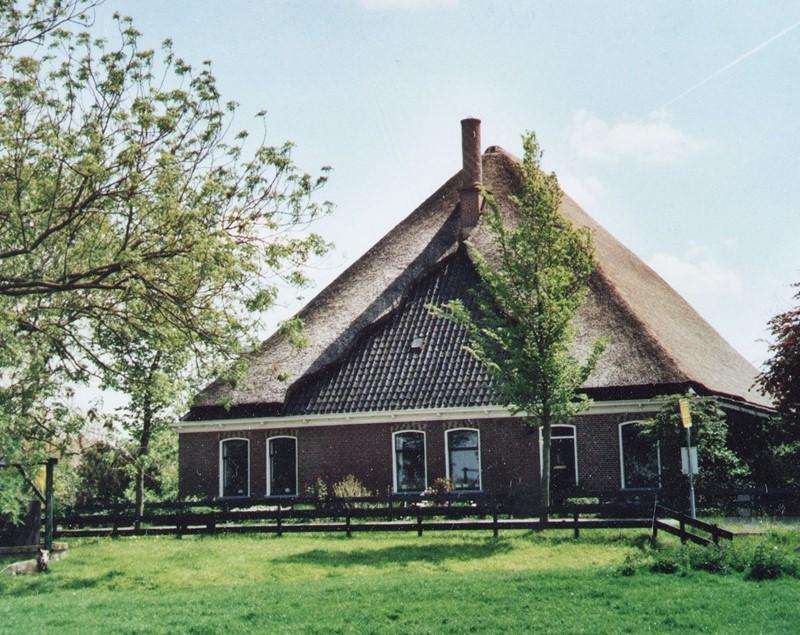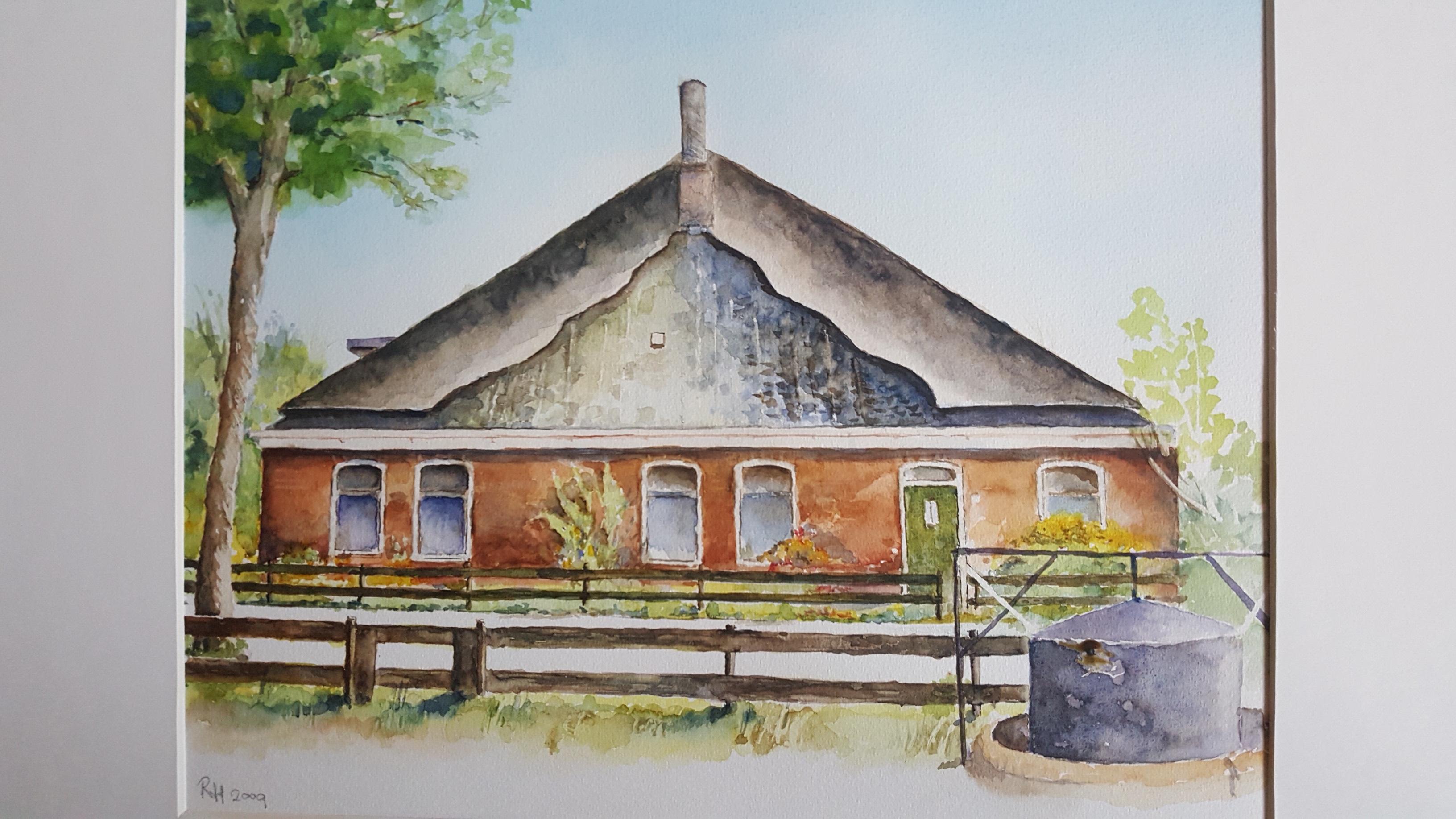What is special about this farmhouse at number 10 is that the pipes to the old source gas installation can still be found on the other side of the road. The black round kettle is used for storing source gas. At the end of the 19th century, farmers extracted source gas from groundwater in many Dutch polders. Source gas is created by the bacterial decomposition of plants and algae in a sandy peat and clay soil. Groundwater rose by itself via a source pipe (longer than 25 metres). The weights on the boiler provided the gas pressure. The gas went through thin pipes to numbers 3, 8 and 10 and was used for lighting and cooking. Short history of the source gas installation Around 1850, farmer Wouter Sluis from the Beemster discovered that there was something strange about the water coming out of the Nortonwel. The water, when it came to the surface, looked a little milky white. If you put the water in a bucket and let it stand for an hour, the water became almost clear. The milky color is caused by gas bubbles in the water. With some experiments, Wouter Sluis discovered that the gas bubbles consist of a flammable gas. It took almost 45 years before he, together with the company Lankelma, developed an installation that could separate the gas from the Nortonwelwater. How does the gas end up in the well water? A well pipe was driven into the ground to obtain spring water. The gas, called source gas, is formed by the conversion and breakdown of shells, algae, seaweed and plankton by bacteria. Storage boiler The large storage boiler, the gas holder, could move up and down, it was guided by a central bar. The depth of the pit was about three meters. The floating height of the boiler was indicative of the amount of gas stored in it. A gas line went from the storage tank to the house. When the gas was not used and the boiler was full (that is, the boiler was almost completely above the water), the gas bubbled up the bottom of the boiler and escaped. Often the boiler was then weighted, so that the pressure in the boiler increased, so that more gas could be stored. This source gas storage tank in Barsingerhorn is no longer in use. The gas came from the ditch behind the shelter. Over the source, which was visible through the bubbling of water, a well was dug a little further on with a gas holder on it, which rose and fell under the pressure of the gas it received. The gas was extracted through thin pipes from house numbers 3, 8 and 10. It was used for light and cooking. Heerenweg 10 The farmhouse at Heerenweg 10 was built in 1863 and has a thatched roof with roof mirror. That is the recessed part in the reed covering that is covered with a black glazed Dutch pan. In the top of the facade is a round chimney with brick decoration. The inhabitants of the farm are the owners of the storage boiler, which is no longer in use as such. Poem It sat there for centuries Gas in the West Frisian Klai See you in the Biemster Until the discovery came and said: “Nei dat gas we know bore, Store it in a big barrel. ‘t Water. That’s not necessary, we’ll just do that.’ Inienen then went hil Westfriesland Along with the fellow toid. With that gas for light and cold, Everyone was shy bloid. Bregtje Buishand Sources Information via Mrs. Hartman – De Laat https://www.boerderijenstichting.nl/beeldbank/heerenweg-10-barsingerhorn/ https://nl.wikipedia.org/wiki/Brongasinstallation https://www.laagholland.com/locaties/163469645/brongasinstallation Publication ‘Traditional source gas extraction’ by Roelof Stuurman of the Netherlands Institute of Applied Geosciences.
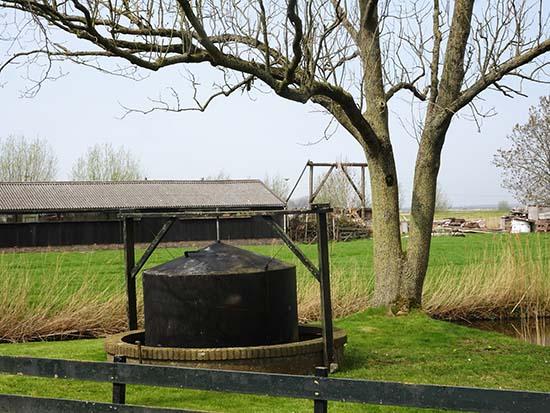
Nearby locations
-
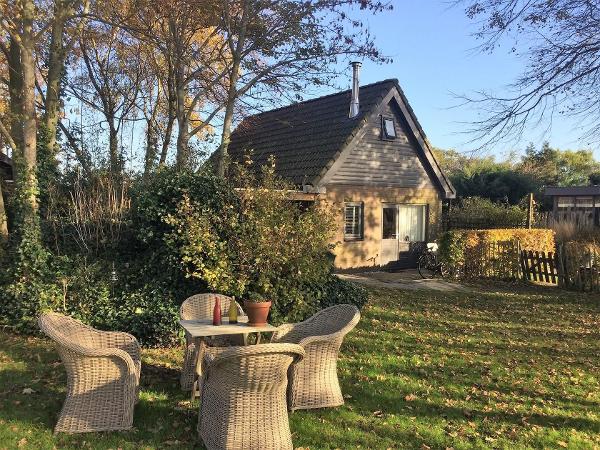
Olling Art Inn
- Location
- Barsingerhorn
Relax and enjoy a weekend or week in the countryside of the ribbon village of Barsingerhorn. We wish you a warm welcome to our sturdy nature house with wood stove and large enclosed garden at the foot of the West Frisian Omringdijk near the village of Kolhorn. The North Sea, Wadden Sea and the IJsselmeer are within reach. You can stay here with the artist. It is wonderful to stay in this beautiful, very diverse nature and cultural area in the Kop van Noord-Holland.
-

Golf course Molenslag
- Location
- Barsingerhorn
Golf course Molenslag presents golf as it is intended: In a serious but enjoyable way enjoying the fantastic sports golf. You do not have to buy a bond, no registration fees, you pay your membership and just play! We are a golf course that wants to strive for a golf club, where you can play for a relatively cheap amount whenever you want.
-

B&B Hollandswelvaren
- Location
- Barsingerhorn
Bed and Breakfast Hollandswelvaren in Barsingerhorn is a holiday home with 2 apartments.
-

B&B De Verre Kijker
- Location
- Barsingerhorn
Next to our farmhouse, right at the bottom of the West Frisian seawall, is B&B voor 2, De Verre Kijker. Enjoy the wide view inside and outside and relax completely in the attractively furnished accommodation, which consists of a living room and a separate bedroom and a shower with toilet. Very suitable for peace seekers, hikers, cyclists, motorcyclists, dreamers and bird lovers. A different painting every season, you simply have to experience this, so plan a few days away and settle down at Poolland 26.
-

Tramabri
- Location
- Barsingerhorn
A tramabri is a waiting house at the tram stop. This guardhouse was built in 1910 in Barsingerhorn. From here the tram went via Wieringerwaard to Van Ewijcksluis.
-

Monument route: Along dikes and villages
- Location
- Barsingerhorn
You can discover our beautiful municipality by bicycle via the bicycle route. The route takes you about 30 kilometers through beautiful nature and past old stately houses, churches, farms and locks. Along the way you will pass, in addition to the many religious buildings, also numerous historic buildings that, together with the other monuments, make our municipality a picture. The route can be followed via the audio tour of Izi.travel.
-
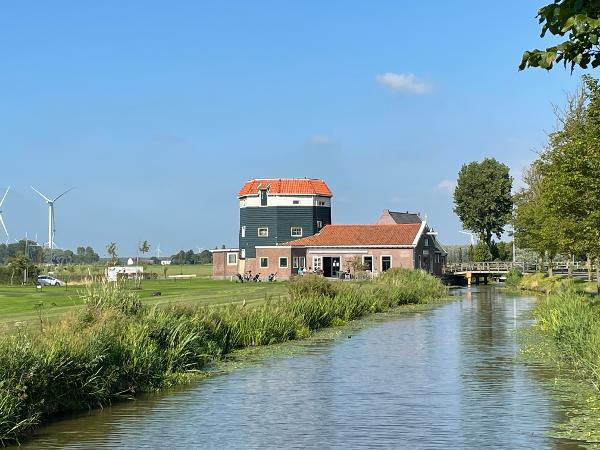
Molenromp Barsingerhorn
- Location
- Barsingerhorn
The flour mill in Barsingerhorn was built in 1907 because in February 1907 the mill that stood here burned down in a fire. For the construction of a new mill/the current mill, a demolition mill was sought in the Zaan region. The peeling mill 'Het Wapen van Friesland' was found for this purpose in Zaandam-East, which was built in 1761.
-

Maartje Cornelis Hoeve
- Location
- Barsingerhorn
-

De Parel van Poolland
- Location
- Barsingerhorn
We wish you a warm welcome to De Parel van Poolland, a luxury B&B located on the 800-year-old Westfriese Omringdijk. It is located near the cozy Schagen and picturesque Kolhorn in a wonderful cycling environment and the beach is 15 kilometers away. The B&B is located in its own yard, breakfast is provided with organic products.






